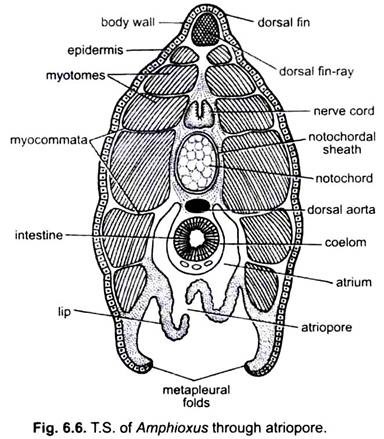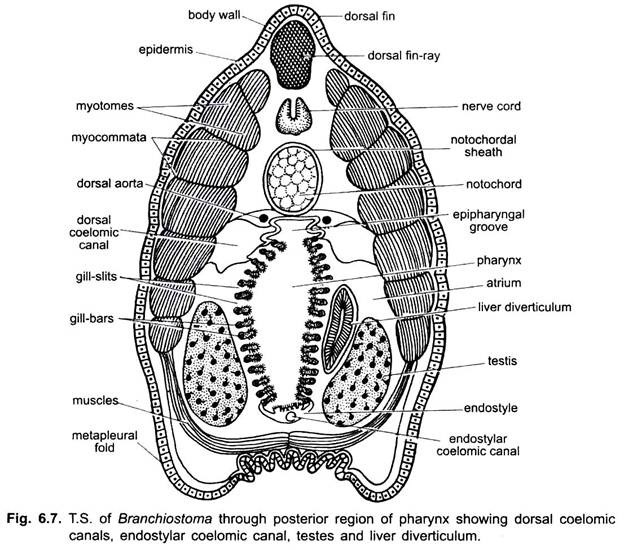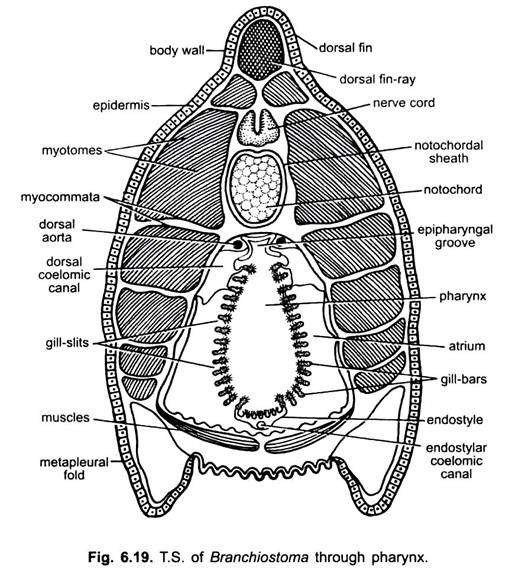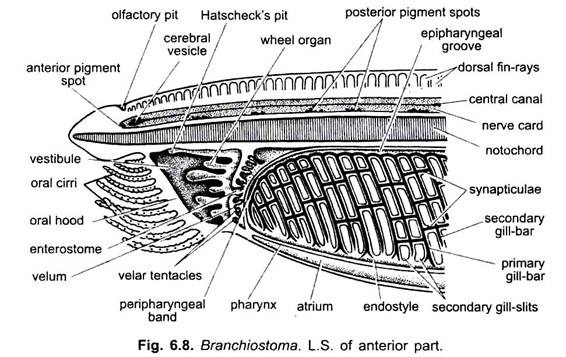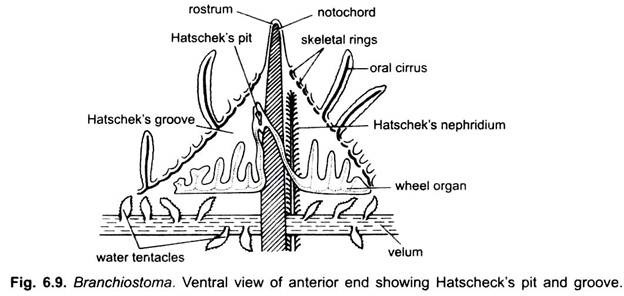The atrial cavity or atrium is an extensive space lined with ectoderm. It is formed by a pair of metapleural folds one on either side above gill-slits of embryo, growing down and getting united ventrally by a transverse shelf so that a portion of the outside space becomes enclosed within the body (Fig. 6.6.).
The atrium forms a large cavity which surrounds the pharynx and anterior part of the intestine both laterally and ventrally (Figs. 6.7. and 6.19).
Thus, the gill-slits open into the atrium and not directly outside as in other chordates. The atrium opens outside through a small rounded, mid-ventral atriopore placed just in front of the ventral fin. Posteriorly it also extends back on the right side of the intestine as a blind pouch which runs almost up to the anus.
From near the hind end of the pharynx the atrium gives out two conical pouches, each projecting in front into the coelom on either side of the pharynx, these pouches are brown funnels or atrio-coelomic canals of unknown function. The atrium lined with ectoderm, protects the pharyngeal region of the animal.
ADVERTISEMENTS:
